Fix Windows Modules Installer Worker High CPU Usage
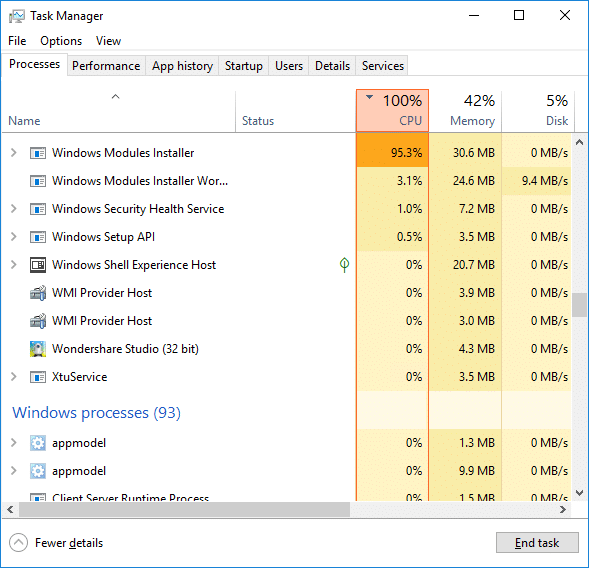
If you are facing the High CPU Usage by Windows Modules Installer Worker, then don’t worry as thousands of other users are also facing the similar problem and therefore, there are many working fixes which we will be discussing today in this article. To verify if you are facing this issue open Task Manager (Ctrl + Shift + Esc) and you will find that the Windows Modules Installer Worker is consuming High CPU or Disk Usage.

Pro Tip: You may leave your PC overnight or for a few hours to see the issue rectify itself once the Windows is finished downloading and installing updates.
What is Windows Modules Installer worker (WMIW)?
Windows Modules Installer worker (WMIW) is a service which takes cares of automatically installing Windows Update. According to its service description, WMIW is a system process that enables automatic installation, modification, and removal of Windows updates and optional components.
This process is responsible for finding new Windows Update automatically and installing them. As you might be aware that Windows 10 automatically install newer builds (i.e. 1803 etc.) via Windows Updates, so this process is responsible for installing these updates in the background.
Although this process is called Windows Modules Installer worker (WMIW) and you will see the same name in the Processes tab in the Task Manager, but if you switch to Details tab, then you will find the name of the file as TiWorker.exe.
Why Is Windows Modules Installer worker Using So Much CPU?
As Windows Modules Installer worker (TiWorker.exe) runs continuously in the background, sometimes it might utilize high CPU or disk usage when installing or uninstalling Windows Updates. But if its constantly using high CPU then the Windows Modules Installer worker may have become unresponsive while checking new updates. As a result, you may be experiencing lags, or your system might hang or freeze completely.
The first thing users do when they experience freezing, or lagging issues on their system is to restart their PC, but I assure you that this strategy won’t work in this case. This is because the issue will not resolve by itself until and unless you fix the underlying cause.
Fix Windows Modules Installer Worker High CPU Usage
Tiyaking gumawa ng restore point kung sakaling may magkamali.
Windows Modules Installer Worker (WMIW) is an important service, and it should not be disabled. WMIW or TiWorker.exe is not a virus or malware, and you cannot just delete this service from your PC. So without wasting any time let’s see How to Fix Windows Modules Installer Worker High CPU Usage sa tulong ng nakalistang gabay sa pag-troubleshoot sa ibaba.
Paraan 1: Patakbuhin ang Troubleshooter ng Windows Update
1. Pindutin ang Windows Key + I para buksan Setting pagkatapos ay mag-click sa Icon ng Update at Seguridad.
![]()
2. Mula sa kaliwang menu, piliin ang I-troubleshoot sa ilalim ng "Tumayo at tumakbo" mag-click sa Pag-update ng Windows.

3. Ngayon mag-click sa "Patakbuhin ang troubleshooter” sa ilalim ng Windows Update.
4. Let the troubleshooter run, and it will automatically fix any issues found with Windows Update taking forever.
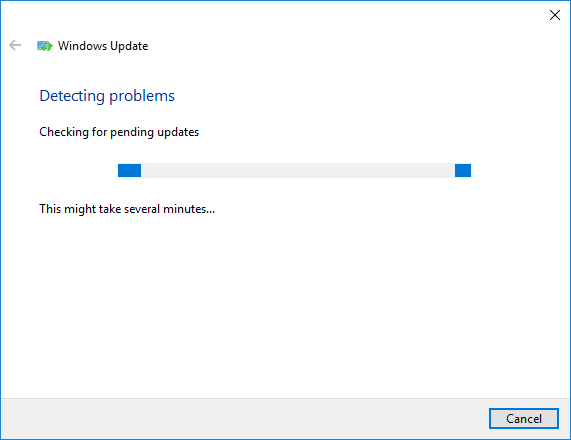
Method 2: Manually Check for Windows Updates
1. Pindutin ang Windows Key + I pagkatapos ay piliin Update at Security.
2. Mula sa kaliwang bahagi, nag-click ang menu Pag-update ng Windows.
3. Ngayon mag-click sa “Suriin ang mga update” button para tingnan ang anumang available na update.

4. Kung ang anumang mga update ay nakabinbin, pagkatapos ay mag-click sa I-download at I-install ang mga update.

5. Kapag na-download na ang mga update, i-install ang mga ito, at magiging up-to-date ang iyong Windows.
Method 3: Configure Windows Update to Manual
Mag-ingat: This method will switch Windows Update from automatically installing the new updates to the manual. This means you have to manually check for Windows Update (weekly or monthly) to keep your PC secure. But follow this method, and you can again set the Updates to Automatic once the issue is resolved.
1. Pindutin ang Windows Key + R pagkatapos ay i-type services.msc at pindutin ang Enter.

2. Scroll down and find Installer ng Windows Modules service in the list.
3. Mag-right click sa Windows Modules Installer service at piliin ang Properties.
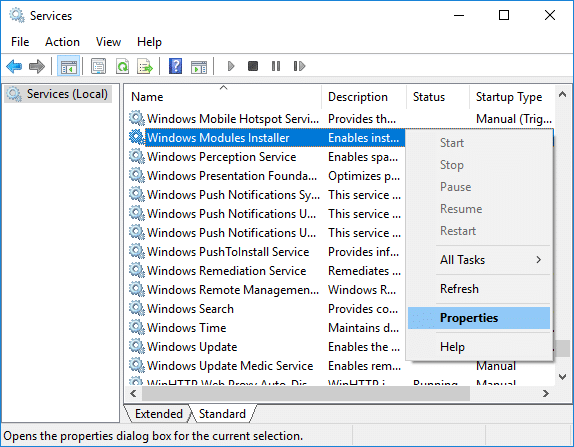
4. Ngayon mag-click sa Itigil then from the Uri ng startup drop-down select Manu-manong.
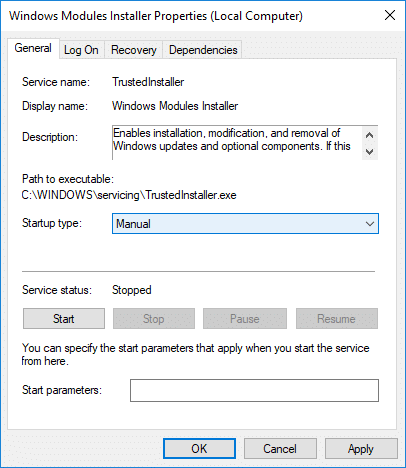
5. I-click ang Ilapat, na sinusundan ng OK.
6. Similarly, follow the same step for the Serbisyo ng Windows Update.

7. I-reboot ang iyong PC upang i-save ang mga pagbabago.
8. Muli suriin para sa Windows Updates Manually and install any pending updates.
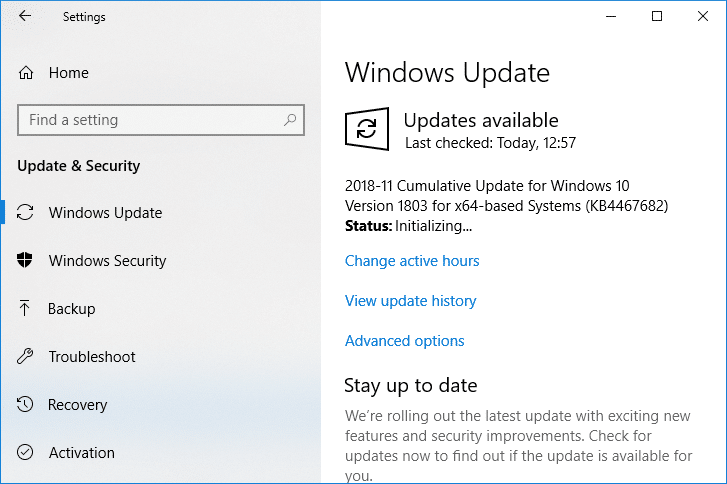
9. Once is done, again go back to services.msc window and open the Windows Modules Installer & Windows Update Properties window.
10. Itakda ang Uri ng startup sa Awtomatik at i-click ang simula. Then click Apply followed by OK.
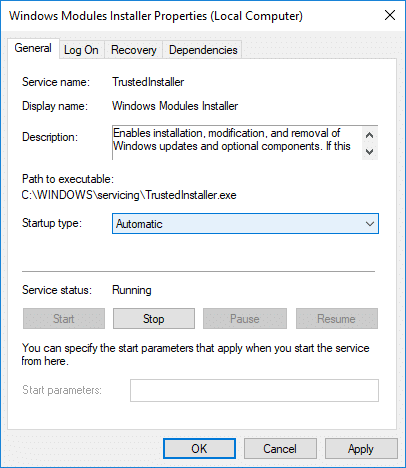
11. I-reboot ang iyong PC upang i-save ang mga pagbabago.
Paraan 4: Patakbuhin ang System Maintenance Troubleshooter
1. Pindutin ang Windows Key + R pagkatapos ay i-type ang control at pindutin ang Enter para buksan Control Panel.

2. Maghanap ng Troubleshoot at mag-click sa Pag-troubleshoot.

3. Susunod, mag-click sa Tingnan ang lahat ng sa kaliwang pane.
4. Mag-click sa “System Maintenance” upang patakbuhin ang System Maintenance Troubleshooter.

5. Maaaring magawa ng Troubleshooter Fix Windows Modules Installer Worker High CPU Usage, but if it didn’t, then you need to run System Performance Troubleshooter.
6. Buksan ang Command Prompt. Maaaring gawin ng user ang hakbang na ito sa pamamagitan ng paghahanap 'cmd' at pagkatapos ay pindutin ang Enter.

7. I-type ang sumusunod na command sa cmd at pindutin ang Enter:
msdt.exe / id PerformanceDiagnostic
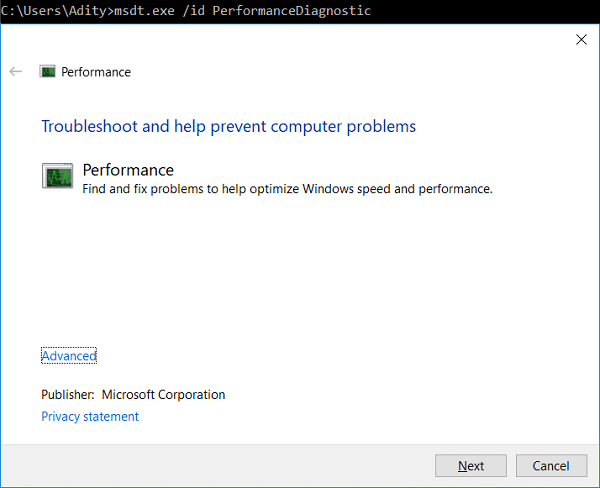
8. Follow the on-screen instruction to run the troubleshooter and fix any issues find the System.
9. Finally, exit the cmd and reboot your PC.
Method 5: Disable Automatic Maintenance
Sometimes Automatic Maintenance can conflict with the Windows Modules Installer Worker service, so try to disable Automatic Maintenance using this guide and see if this fixes your issue.
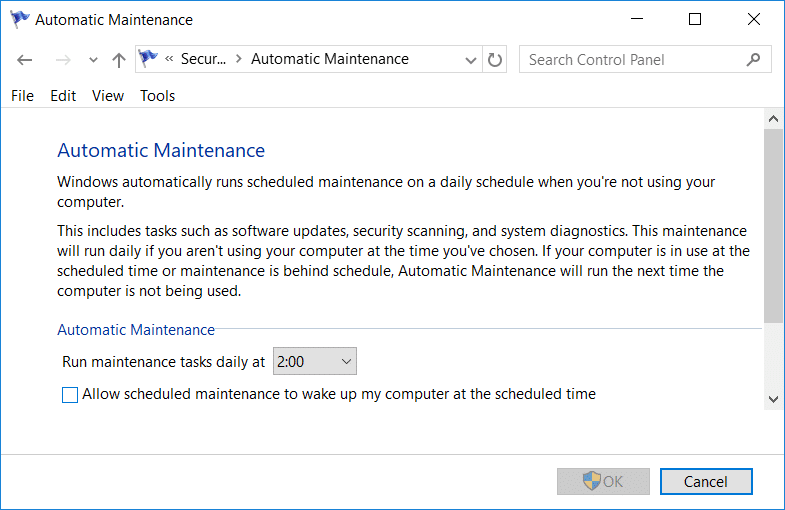
Although disabling Automatic Maintenance is not a good idea, but there might be some case where you need to actually disable it, for example, if your PC freezes during automatic maintenance or Windows Modules Installer Worker High CPU Usage issue then you should disable maintenance to troubleshoot the issue.
Method 6: Run System File Checker and DISM
1. Buksan ang Command Prompt. Maaaring gawin ng user ang hakbang na ito sa pamamagitan ng paghahanap 'cmd' at pagkatapos ay pindutin ang Enter.
2. Ngayon i-type ang sumusunod sa cmd at pindutin ang enter:
Sfc /scannow sfc /scannow /offbootdir=c: /offwindir=c:windows (Kung nabigo ang itaas, subukan ito)

3. Hintaying matapos ang proseso sa itaas at kapag tapos na, i-restart ang iyong PC.
4. Buksan muli ang cmd at i-type ang sumusunod na command at pindutin ang enter pagkatapos ng bawat isa:
Dism /Online /Cleanup-Image /CheckHealth Dism /Online /Cleanup-Image /ScanHealth Dism /Online /Cleanup-Image /RestoreHealth

5. Hayaang tumakbo ang DISM command at hintayin itong matapos.
6. Kung hindi gumana ang command sa itaas, subukan ang nasa ibaba:
Dism /Image:C:offline /Cleanup-Image /RestoreHealth /Source:c:testmountwindows Dism /Online /Cleanup-Image /RestoreHealth /Source:c:testmountwindows /LimitAccess
tandaan: Palitan ang C:RepairSourceWindows ng iyong pinagmumulan ng pagkumpuni (Pag-install ng Windows o Recovery Disc).
7. I-reboot ang iyong PC upang i-save ang mga pagbabago at tingnan kung magagawa mo Fix Windows Modules Installer Worker High CPU Usage.
Paraan 7: Magsagawa ng Clean Boot
Sometimes 3rd party software can conflict with Windows and can cause the issue. To Fix Windows Modules Installer Worker High CPU Usage issue, kailangan mong magsagawa ng malinis na boot sa iyong PC at i-diagnose ang isyu nang hakbang-hakbang.
Method 8: Set your WiFi as Metered Connection
tandaan: This will stop Windows Automatic Update, and you will need to manually check for Updates.
1. Pindutin ang Windows Key + I para buksan Setting pagkatapos ay mag-click sa Network at Internet.

2. Mula sa kaliwang menu, piliin ang Wi-Fi.
3. Under Wi-Fi, mag-click on your currently connected network (WiFi).
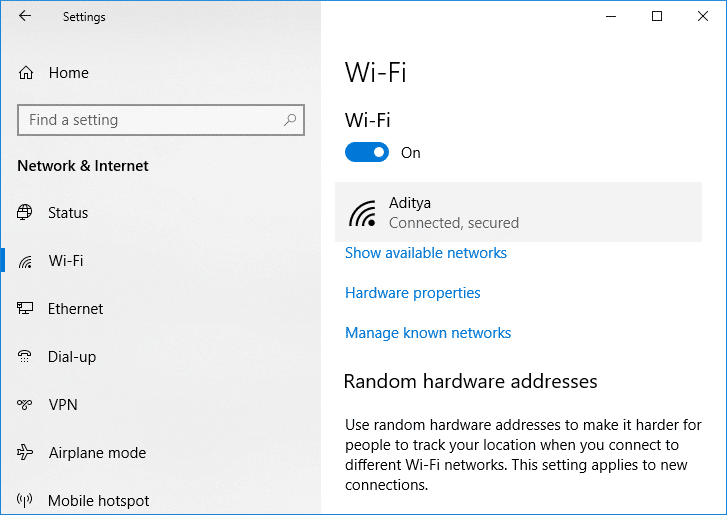
4. Scroll down to Metered connection and paganahin ang toggle sa ilalim ng "Itakda bilang metered na koneksyon".
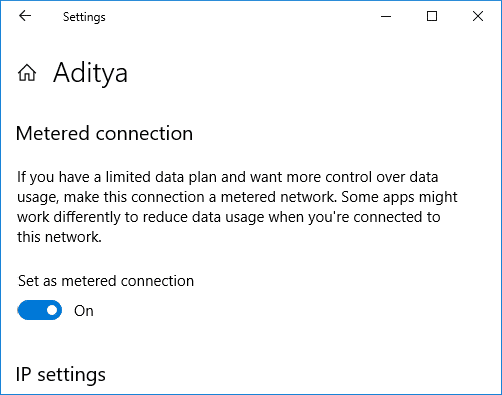
5. Close Settings and reboot your PC to save changes.
Inirerekomenda:
Iyon lang, matagumpay ka na Fix Windows Modules Installer Worker High CPU Usage ngunit kung mayroon ka pa ring mga katanungan tungkol sa tutorial na ito, huwag mag-atubiling tanungin sila sa seksyon ng komento.
